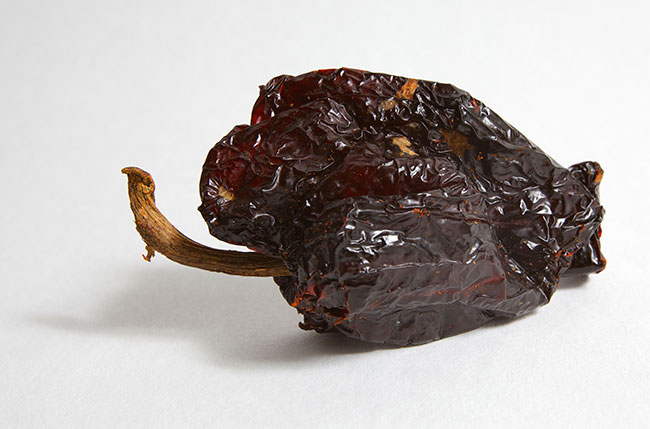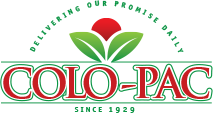
Ancho is the traditional name for a dried Poblano chile. The word comes from Spanish, and means wide, which describes this particular pepper very well. The pepper’s heat ranges from mild to medium-hot. It registers from 1,000 to 2,000 on the Scoville scale, although in some rare cases, Poblanos and anchos have been known to be much hotter with no indication. Anchos are typically made from the most mature Poblano chiles, which have a very rich flavor. The drying process adds smokiness, and helps highlight the sweet, fruity flavor of the chile. In addition to enhancing the flavor of the Poblano, drying the chile also greatly extends its shelf life. While fresh Poblanos last only about a week, anchos can be stored in an airtight container for about a year.
Anchos are often used in the same applications that fresh Poblanos would be used. One of the most popular and traditional uses of the ancho is chiles rellenos. This is a classic recipe made by stuffing whole peppers with cheese, meats and vegetables, then breaded and fried. When a recipe requires a whole ancho, they generally need to be rehydrated first. Anchos can also be ground to a powder or paste and used as a spice, especially in meat rubs and marinades. The flavor of the ancho works especially well with salmon and pork. Ground anchos are also commonly used in sauces and seasonings. Mole sauces are often made with ancho paste or powder. The ancho, along with the dried chilaca chile and mulato chile, form the “holy trinity,” and these three peppers are the most common among traditional Mexican cooking.
While anchos can be stored for a very long time, they do have an expiration date. Once the dried chile becomes very fragile and flaky, and the skin becomes translucent, it should not be used. When using whole anchos for recipes like chiles rellenos, the pepper should be rehydrated first. To do this, begin by cutting off the cap of the dry pepper, and shaking out the seeds. Then, simply soak the chile in a bowl of warm water until it becomes very tender to the touch, it will take twenty to thirty minutes. The water that was used to soak the chile can be used to add flavor to soups, stews or sauces. The rehydrated ancho can be easily turned into a paste in a blender or food processor. If a powder is desired, begin by removing the cap and shaking the seeds out, skip the rehydrating process, and grind the dry pepper in a food processor or with a mortar and pestle. It is important to remember to thoroughly wash your hands, and all tools and surfaces after working with spicy peppers, as the oils in the chile can cause serious irritation.


 BACK TO PRODUCTS
BACK TO PRODUCTS